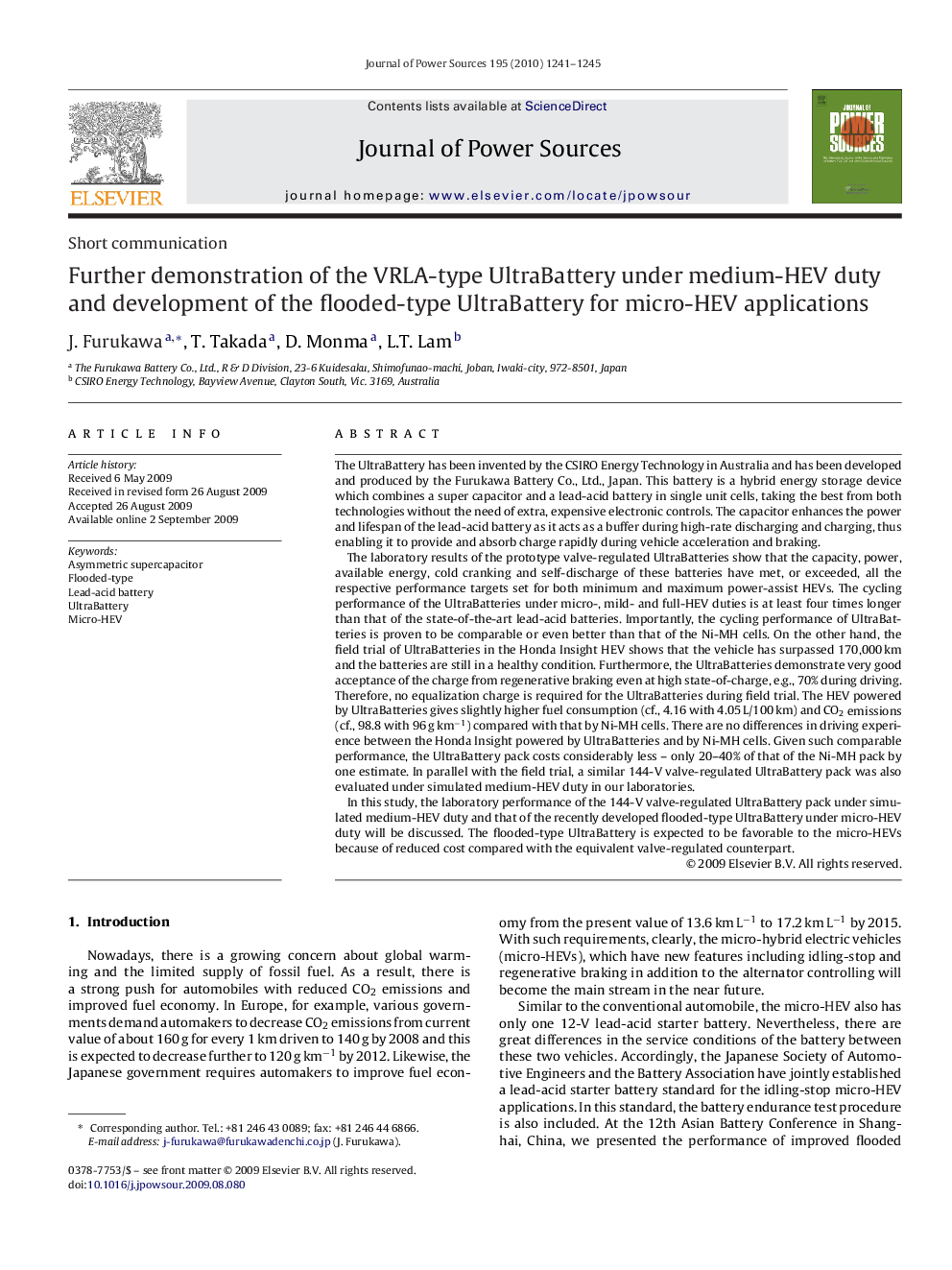| کد مقاله | کد نشریه | سال انتشار | مقاله انگلیسی | نسخه تمام متن |
|---|---|---|---|---|
| 1285128 | 973119 | 2010 | 5 صفحه PDF | دانلود رایگان |

The UltraBattery has been invented by the CSIRO Energy Technology in Australia and has been developed and produced by the Furukawa Battery Co., Ltd., Japan. This battery is a hybrid energy storage device which combines a super capacitor and a lead-acid battery in single unit cells, taking the best from both technologies without the need of extra, expensive electronic controls. The capacitor enhances the power and lifespan of the lead-acid battery as it acts as a buffer during high-rate discharging and charging, thus enabling it to provide and absorb charge rapidly during vehicle acceleration and braking.The laboratory results of the prototype valve-regulated UltraBatteries show that the capacity, power, available energy, cold cranking and self-discharge of these batteries have met, or exceeded, all the respective performance targets set for both minimum and maximum power-assist HEVs. The cycling performance of the UltraBatteries under micro-, mild- and full-HEV duties is at least four times longer than that of the state-of-the-art lead-acid batteries. Importantly, the cycling performance of UltraBatteries is proven to be comparable or even better than that of the Ni-MH cells. On the other hand, the field trial of UltraBatteries in the Honda Insight HEV shows that the vehicle has surpassed 170,000 km and the batteries are still in a healthy condition. Furthermore, the UltraBatteries demonstrate very good acceptance of the charge from regenerative braking even at high state-of-charge, e.g., 70% during driving. Therefore, no equalization charge is required for the UltraBatteries during field trial. The HEV powered by UltraBatteries gives slightly higher fuel consumption (cf., 4.16 with 4.05 L/100 km) and CO2 emissions (cf., 98.8 with 96 g km−1) compared with that by Ni-MH cells. There are no differences in driving experience between the Honda Insight powered by UltraBatteries and by Ni-MH cells. Given such comparable performance, the UltraBattery pack costs considerably less – only 20–40% of that of the Ni-MH pack by one estimate. In parallel with the field trial, a similar 144-V valve-regulated UltraBattery pack was also evaluated under simulated medium-HEV duty in our laboratories.In this study, the laboratory performance of the 144-V valve-regulated UltraBattery pack under simulated medium-HEV duty and that of the recently developed flooded-type UltraBattery under micro-HEV duty will be discussed. The flooded-type UltraBattery is expected to be favorable to the micro-HEVs because of reduced cost compared with the equivalent valve-regulated counterpart.
Journal: Journal of Power Sources - Volume 195, Issue 4, 15 February 2010, Pages 1241–1245